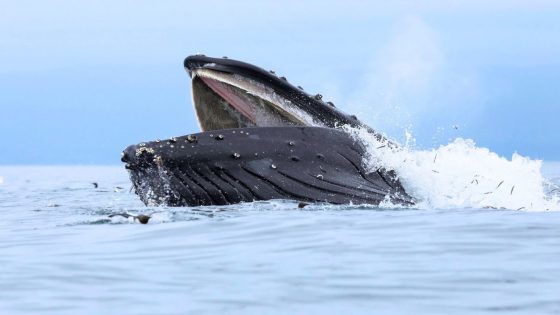A kayaker named Adrián Simancas experienced a surprising encounter with a humpback whale off the coast of Chilean Patagonia recently. A video of the incident went viral, leading many to believe that the whale had swallowed him before spitting him out.
- Kayaker's viral video misinterpreted as whale swallowing.
- Whale experts clarify encounter details.
- Humpback whales cannot swallow humans.
- Whale feeding involves filtering small prey.
- Awareness of wildlife is crucial for safety.
- Guidelines promote responsible marine interactions.
Experts, however, have clarified that while the footage is captivating, it is misleading to suggest that a whale can swallow a human. Danny Groves from Whale and Dolphin Conservation explained that a humpback’s throat is only the size of a human fist, making it impossible for the whale to swallow a person.
The incident involving Simancas has raised questions about human-wildlife interactions in marine environments. Humpback whales primarily feed by taking in large amounts of water and filtering out small fish and plankton using baleen. They do not target humans as prey, and this particular whale was likely engaged in its normal feeding behavior when it encountered the kayaker.
Key points regarding humpback whale feeding include:
- Humpbacks can take in large gulps of water.
- Their throat size limits them to swallowing only small fish and plankton.
- Humans are not part of their diet.
Experts emphasize the importance of responsible behavior while engaging in marine activities. Disturbances to wildlife are increasing as more people participate in water sports without understanding the necessary precautions. Whale and Dolphin Conservation has provided guidelines to ensure safe and respectful interactions with marine animals, such as maintaining a safe distance and limiting the duration of encounters.
In summary, while the video of Adrián Simancas and the humpback whale captured significant attention, experts confirm that the whale cannot swallow a human. This incident serves as a reminder of the importance of understanding wildlife behaviors and maintaining safe distances during marine encounters.






























